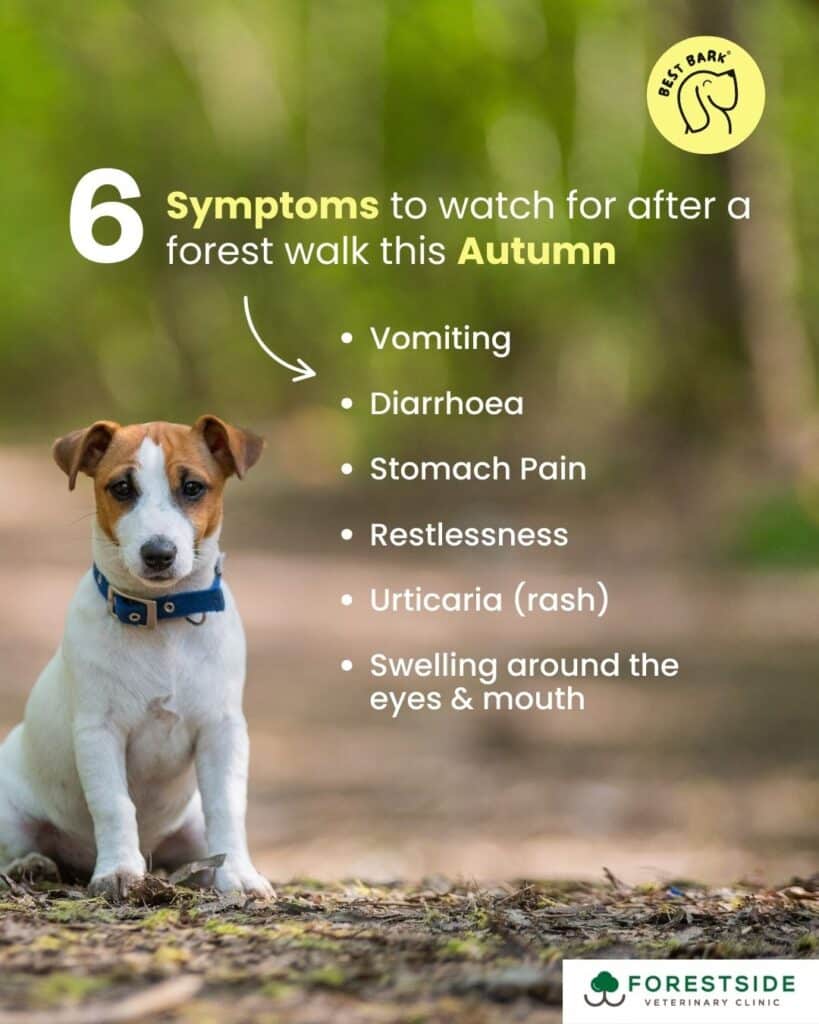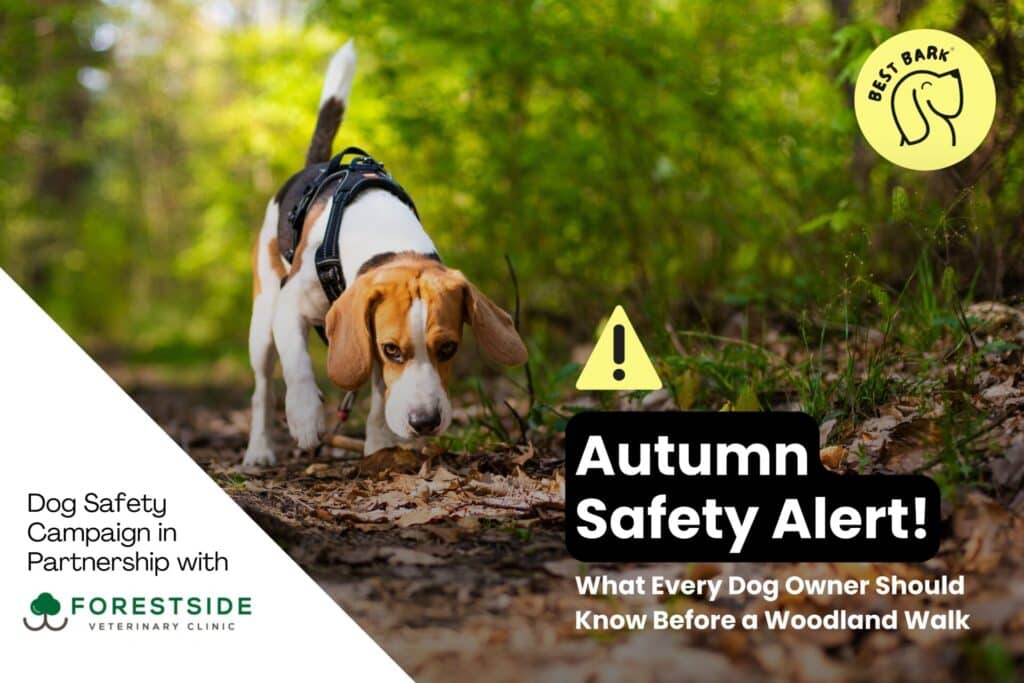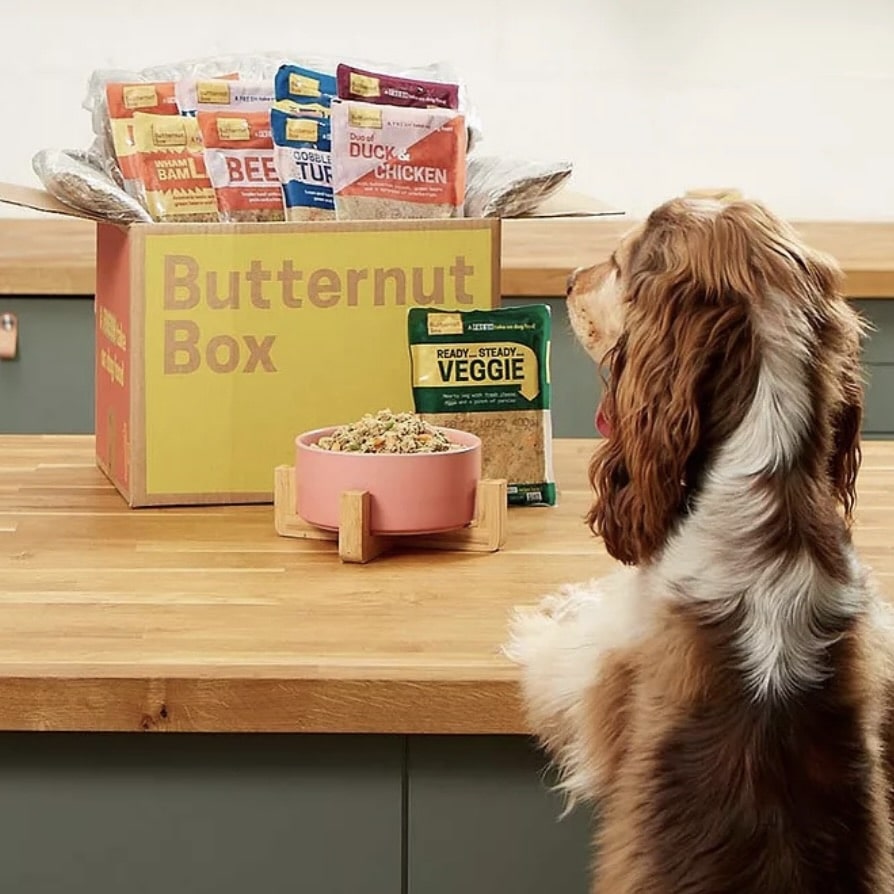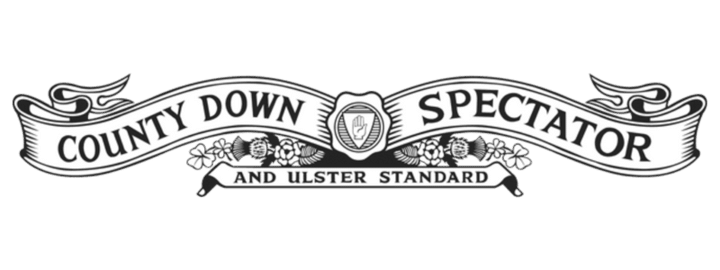We have teamed up with Forestside Veterinary Clinic to share a friendly autumn safety note for dog owners. Autumn is a great time to get out with your pup. Northern Ireland has lots of lovely woodland walks to explore and we have listed our favourites in our guide to autumn forest walks in Northern Ireland.
If your dog loves a good forage, it is worth being extra careful on woodland walks.
This guide explains why conkers and acorns are risky, what signs to watch for, and what to do if your dog eats one. And if you are ever worried, please contact Forestside Veterinary Clinic for advice and care. We are proud to partner with a team that puts dogs and their people first.
Why They are Risky
- Conkers come from horse chestnut trees. They contain a toxin called aesculin that can upset the stomach and, in rare cases, cause more serious illness. They are also hard and slippery, so they can lodge in the throat or the intestines.
- Acorns contain tannins that irritate the gut and, in uncommon cases, can affect the liver and kidneys. Like conkers, they can also cause a blockage.
Signs to Watch for After a Woodland Walk
- Vomiting or diarrhoea
- Drooling or pawing at the mouth
- Tummy pain or bloating
- Restlessness or shaking
- Tiredness, not wanting food
- Swelling around the mouth or face
If you notice any of these, contact your vet straight away. If you are in Belfast or nearby, you can reach Forestside Veterinary Clinic for advice or an urgent appointment.
What To Do if Your Dog Eats a Conker or Acorn
- Stay calm and remove any remaining pieces from their mouth.
- Do not try to make your dog vomit. This can be dangerous.
- Call your vet immediately and follow their guidance. Note roughly how many were eaten and when.
- Keep a sample of what they chewed if you can.
- Monitor closely for the symptoms above, even if your dog seems fine at first.
Simple Ways to Prevent Problems
- Avoid heavy drop zones. In autumn, steer clear of areas with lots of oaks and horse chestnuts, or keep your dog on a short lead in these spots.
- Teach a strong “leave it” and “drop.” Practice at home using safe rewards.
- Bring your own toy. Use a ball or a vet approved chew so your dog has something safe to carry.
- Do not play fetch with conkers or acorns. They can splinter or get swallowed.
- Tidy your garden. If you have oak or horse chestnut trees, clear fallen nuts and shells regularly.
Conkers vs Sweet Chestnuts
People often ask if “chestnuts” are safe. Conkers are the glossy seeds of the horse chestnut and are toxic to dogs. Sweet chestnuts come from a different tree. Even though sweet chestnuts are not the same as conkers, do not feed wild nuts to your dog. Many dogs get tummy upset from rich, unfamiliar foods and any nut can be a choking risk. When in doubt, skip it.

When to Seek Help
You should contact your vet any time you think your dog has chewed or swallowed a conker or acorn, even if they look well. Early advice can prevent complications. For local support and same day care in Belfast, contact Forestside Veterinary Clinic.
Enjoy your autumn adventures. Just make sure your pup sticks to the sticks.
In partnership with Forestside Veterinary Clinic.










